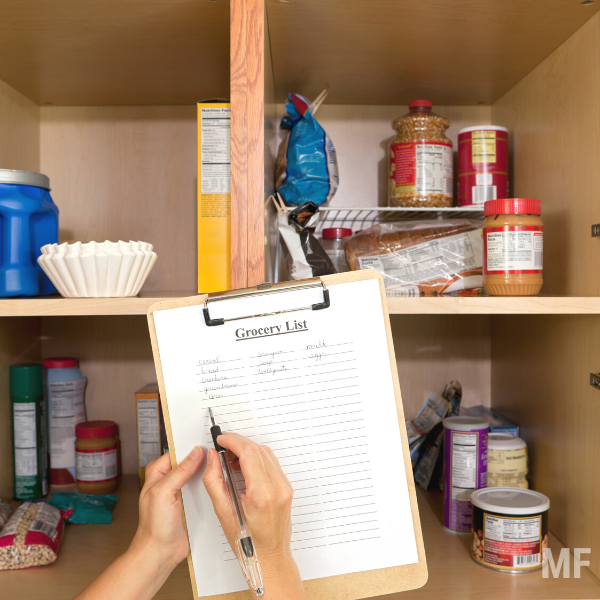The Biggest Expenses for Families
What are the biggest expenses for families in today's world? Let's find out. Managing a family budget is akin to steering a ship through ever-shifting seas. Your expenses ebb and flow, influenced by a myriad of factors like lifestyle choices, the number of people in your household, and the unexpected financial surprises life likes to throw our way.
What are the Biggest expenses for families?
Housing often sits at the pinnacle of the expense pyramid. For many families, keeping a roof over their heads can consume a significant portion of their monthly income.

Transportation is another major player in the monthly budget. Whether it's daily commuting, school runs, or grocery shopping, getting from A to B isn't free. The cost of owning a car, or even multiple cars, including loan payments, insurance, maintenance, and fuel, adds up quickly and can be the second-highest monthly outgoing for many.
With these substantial expenses, it's crucial to find balance and strategies to manage your finances effectively.
While every family's financial landscape is unique, understanding the common costs can prepare you for better budgeting and a more secure financial future.
Housing and Utilities

When you think about the largest chunk of your monthly expenses, housing and utilities often come out on top. This is where a significant portion of your income goes each month. Understanding these expenses can help you manage your budget better.
Mortgage or Rent
Your mortgage or rent is likely the single largest expense in your monthly budget. On average, Americans allocate about 30% of their income to cover this cost.
The median home price in 2022 was around $386,400, which can translate to varied mortgage rates depending on your loan's term and interest rate. If you're renting, the cost can fluctuate significantly based on location, with urban areas typically commanding higher rents.
Electricity, Gas, and Water Bills
Next, your utilities, such as electricity, gas, and water, are essential services amounting to several hundred dollars monthly.
The amount you pay might be influenced by:
- The size of your home
- The climate you live in
- Your personal usage
Utilities are a variable expense, meaning they can fluctuate from month to month.
Insurance and Maintenance
Finally, don't overlook insurance and maintenance, as they are integral to keeping your home in good shape and protecting your investment.
Homeowners insurance averages can vary, but expect to factor in:
- Property taxes
- Regular maintenance
- Unexpected repairs
These expenses are not just necessary for emergencies but also help maintain the value of your home over time.
Remember that setting aside funds each month for these potential costs can prevent financial stress when larger maintenance issues or annual insurance payments arise.
Food and Nutrition

Managing food expenses is crucial for your budget. Your spending on food and nutrition can fluctuate greatly depending on where and how often you choose to purchase your groceries or dine out at restaurants.
Groceries
Buying groceries is a significant part of your monthly food costs.
According to Forbes, your average monthly grocery bill can vary depending on your spending habits—from a low-cost to a liberal plan. Here are some examples:
- Low-cost plan: For a four-person family, you might spend around $650.
- Moderate-cost plan: This could rise to about $850.
- Liberal plan: Spending could reach upwards of $1,050 per month.
To manage these costs effectively:
- Plan meals ahead and stick to a shopping list.
- Buy in bulk for non-perishables and staples.
- Shop sales and use coupons when available.
Dining Out
Eating at restaurants can also add up. Even a few meals out each week can significantly dent your budget.
If you're curious about how often families dine out and what they spend, check out these insights from U.S. News:
- An occasional meal out is normal, but regular dining can increase your food spending by several hundred dollars a month.
- Fast-food restaurants might seem like a cheaper option, but costs can accumulate quickly compared to home-cooked meals.
To keep your dining out expenses in check:
- Set a budget for restaurant meals.
- Look for deals like early-bird specials or days when kids eat free.
- Limit frequency by reserving restaurant visits for special occasions.
Transportation and Auto Expenses

In managing your personal finances, it's important to account for your transportation and auto expenses. These include ongoing costs such as vehicle maintenance and insurance, as well as the fluctuating expenses of gas. Now, let's break down what you need to know.
Vehicle Maintenance and Insurance
Your car is a complex machine, and keeping it in top shape ensures your safety and longevity.
Regular maintenance, such as oil changes, tire rotations, and brake inspections, is part of the deal when owning a car. These can add up, but they are essential for preventing more costly repairs down the line.
Auto insurance is another unavoidable expense, but shopping around for the best rates and discounts for safe driving can help you save money.
Remember that your choice of car can also impact your insurance rates; for example, a model with a high safety rating may result in lower premiums.
Gas Prices and Public Transportation
Gas prices can be unpredictable—ranging from pleasantly affordable to painfully expensive from one month to the next.
Your budget should leave room for these fluctuations, especially if you commute by car.
Keeping track of gas prices in your area and using fuel-efficient driving techniques are smart ways to reduce this expense.
If you want to cut down on personal vehicle costs, consider public transportation a viable alternative.
Adequate planning around bus or train schedules can lead to significant savings over time. Public transportation is also a sustainable option that contributes less to traffic congestion and air pollution.
Healthcare and Insurance

Managing your family's healthcare and insurance is a significant part of your budget. The expenses vary widely depending on your income, type of plan, and health needs.
Health Insurance
Health insurance is a crucial safety net to help you and your family manage healthcare costs.
The average premium for a family health insurance plan can be quite substantial. For example, in 2022, a non-subsidized family of four averaged about $1,437 per month.
Remember, premiums are just the start; depending on your plan, you may have to consider deductibles and other out-of-pocket expenses.
Out-of-Pocket Costs
Beyond premiums, out-of-pocket expenses such as deductibles, co-pays, and coinsurance significantly affect your healthcare spending.
For a non-elderly family in the U.S., you might spend around $8,200 per year, or 11% of your income, on healthcare—not including employer contributions.
Remember, if your household income is lower, you might face even greater challenges affording healthcare.
Higher incomes often equate to more manageable healthcare-related expenditures.








